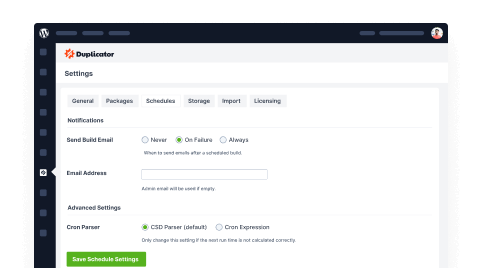Having trouble with security and malware threat detection using Duplicator Pro? This guide provides practical solutions to troubleshoot and handle security and malware threat detection effectively.
To begin with, make sure you are using the latest version of Duplicator Pro. Please check the changelog and system requirements.
Virus Scanner Flags a Potential Threat
If a virus scanner reports a potential threat within the Duplicator pro plugin, follow these steps to assess and resolve the issue.
Solution 1: Validate with VirusTotal
- Cross-check the report – If a virus scan flags an issue, verify it using VirusTotal.
- Analyze the scan results – If Duplicator passes 49 out of 50 virus scans with no detection, and only one or two scanners report a possible threat, it is likely a false positive.
- Upload the file for independent review – You can upload either the entire plugin ZIP file or the flagged file to VirusTotal for a broader analysis.
When to contact support – If the file is flagged as a potential threat by multiple scanners (more than two), contact Duplicator support with the specific file for verification.
Recommended action – If concerns persist, remove the plugin and install a fresh version. If the issue remains, consider a full security audit using services like Wordfence.
Solution 2: Contact Your Hosting Provider
- Request detailed information – If a malware scanner reports a threat, ensure it provides specifics, including the exact lines of code flagged as a risk.
- Clarify vague messages – Generic warnings like “Heuristic logic detected a potential issue” are not sufficient to confirm a real threat.
- Verify with Duplicator’s security record – The base installation of Duplicator is regularly scanned by third-party security firms and remains safe. If a vulnerability is detected, patches are applied promptly.
- Engage with the virus scan provider – If you need more details on the scan result, contact the company that reported the issue for a full malware assessment.
False Positives Example
False positives in malware detection are common. Some security companies quickly address and correct them, while others may take longer.
Case Study: Patchman B.V., a security company, once flagged a Duplicator file as malware due to a definition error. After investigation, they confirmed it was a false positive and issued a correction. WordPress.org forums.
Excerpt from Patchman’s Response:
“This detection was the result of an error in our definition development process. We have updated our security definitions and restored all affected files. We sincerely apologize for the confusion.”
Wordfence Scanner Flags Duplicator
Wordfence’s High Sensitivity Mode can sometimes trigger false positives, particularly for the Duplicator installer.
Solution: Adjust Wordfence Scan Settings
- Disable High Sensitivity Scanning – Revert to the recommended settings to reduce false alerts.
- Ignore false positives – If you prefer to keep High Sensitivity enabled, mark flagged results as “ignored” to prevent repeated alerts.
- Exclude specific files – Use Wordfence’s scanner settings to exclude specific file paths or wildcard paths. (See Wordfence documentation for more details.)
Final Recommendation
While Duplicator is regularly scanned and maintained, always verify flagged files with trusted security tools and services. If other plugins or portions of your site also show positive readings for Malware, then you should investigate deeper into the issue or report it to us.


